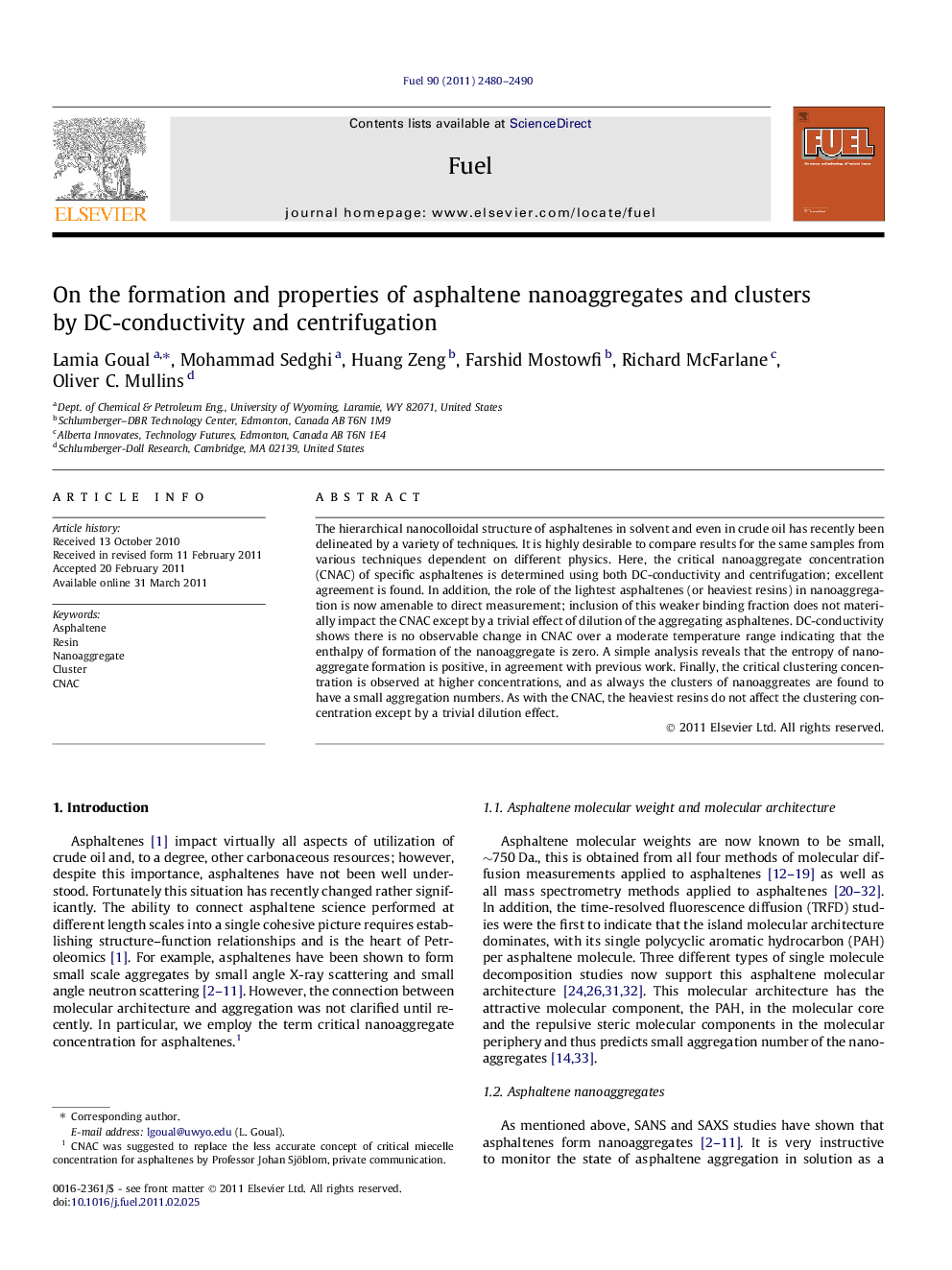| Article ID | Journal | Published Year | Pages | File Type |
|---|---|---|---|---|
| 206516 | Fuel | 2011 | 11 Pages |
The hierarchical nanocolloidal structure of asphaltenes in solvent and even in crude oil has recently been delineated by a variety of techniques. It is highly desirable to compare results for the same samples from various techniques dependent on different physics. Here, the critical nanoaggregate concentration (CNAC) of specific asphaltenes is determined using both DC-conductivity and centrifugation; excellent agreement is found. In addition, the role of the lightest asphaltenes (or heaviest resins) in nanoaggregation is now amenable to direct measurement; inclusion of this weaker binding fraction does not materially impact the CNAC except by a trivial effect of dilution of the aggregating asphaltenes. DC-conductivity shows there is no observable change in CNAC over a moderate temperature range indicating that the enthalpy of formation of the nanoaggregate is zero. A simple analysis reveals that the entropy of nanoaggregate formation is positive, in agreement with previous work. Finally, the critical clustering concentration is observed at higher concentrations, and as always the clusters of nanoaggreates are found to have a small aggregation numbers. As with the CNAC, the heaviest resins do not affect the clustering concentration except by a trivial dilution effect.
Research highlights► The critical nanoaggregate concentration (CNAC) of asphaltenes is determined using both DC-conductivity and centrifugation. ► Excellent agreement is found with both methods. ► The critical clustering concentration (CCC) is observed at higher concentrations by DC-conductivity. ► The CCC indicates that the cluster aggregation number is less than 10. ► Inclusion of the heaviest resins does not materially modify the CNAC and CCC beyond a trivial dilution effect.
